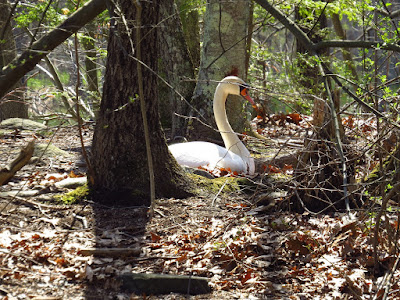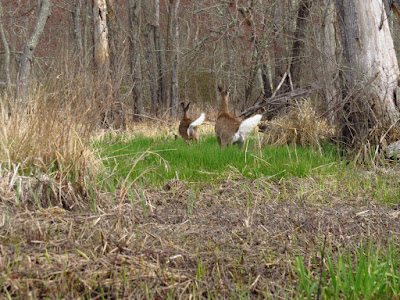Of all things, today seemed a day for solitude, such as I can find it. The weather report was good, especially for the wind if I just headed inland away from the coast.
I set out from near the steel truss bridge and headed upstream. This section of the big river is especially quiet, something that might surprise someone on their first trip. From the steel truss bridge up to the next bridge is about 6-1/2 miles and there are no major roads anywhere in the valley. There are some scattered houses and a few tiny developments of monetarily well supplied people, but most of the houses are well back from the river and behind a thin screen of trees. And there are several stretches in this section where there is nothing but forest on both sides. When i stop my splashing about, it is very quiet.
I don't see too much wildlife today. The count is a half dozen Great Blue Herons, some Vultures, Geese, a Pileated Woodpecker and a pair of Swans. With the calm air, I catch the rapping of Woodpeckers back in the forest.
There are others on the water today, but every one of them are fishermen, mostly in bass boats. Bass boats are low high powered things that race from fishing hole to fishing hole. At first, it hits you as a pretty obnoxious vessel. But in short time I figured out that if I had to share water with a motorboat, I prefer it to be a bass boat. First off, they're only in earshot for about 10 seconds when they pass. Second, they throw little more than a 3 inch high wake. Lastly, they are parked about 55 minutes of every hour. They make much better neighbors than water skiers or jet skis.
Anyway, I make steady paddling of it up to Lover's Leap, a narrow gap where the river runs through high cliffs. I turn back and make steady paddling of it to my put in.



















